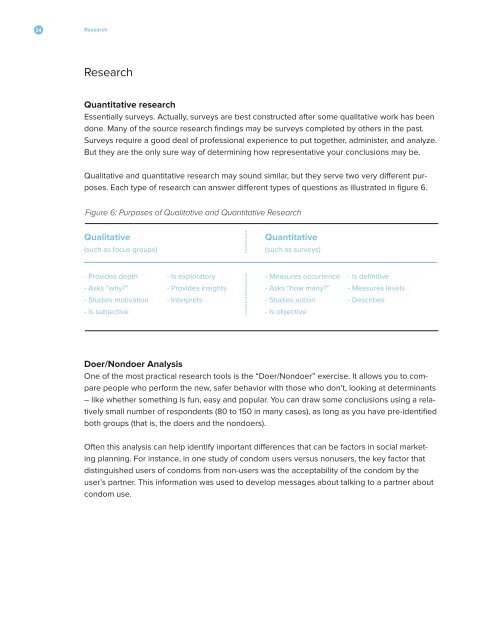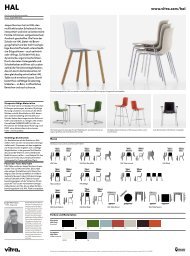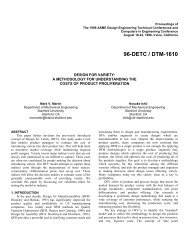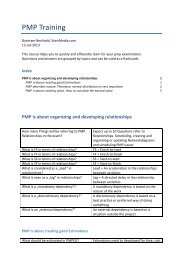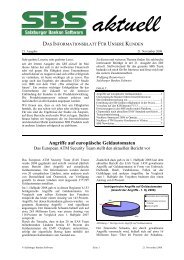Social Marketing
Create successful ePaper yourself
Turn your PDF publications into a flip-book with our unique Google optimized e-Paper software.
34<br />
Research<br />
Research<br />
Quantitative research<br />
Essentially surveys. Actually, surveys are best constructed after some qualitative work has been<br />
done. Many of the source research findings may be surveys completed by others in the past.<br />
Surveys require a good deal of professional experience to put together, administer, and analyze.<br />
But they are the only sure way of determining how representative your conclusions may be.<br />
Qualitative and quantitative research may sound similar, but they serve two very different purposes.<br />
Each type of research can answer different types of questions as illustrated in figure 6.<br />
Figure 6: Purposes of Qualitative and Quantitative Research<br />
Qualitative<br />
(such as focus groups)<br />
- Provides depth<br />
- Asks “why?”<br />
- Studies motivation<br />
- Is subjective<br />
- Is exploratory<br />
- Provides insights<br />
- Interprets<br />
Quantitative<br />
(such as surveys)<br />
- Measures occurrence<br />
- Asks “how many?”<br />
- Studies action<br />
- Is objective<br />
- Is definitive<br />
- Measures levels<br />
- Describes<br />
Doer/Nondoer Analysis<br />
One of the most practical research tools is the “Doer/Nondoer” exercise. It allows you to compare<br />
people who perform the new, safer behavior with those who don’t, looking at determinants<br />
– like whether something is fun, easy and popular. You can draw some conclusions using a relatively<br />
small number of respondents (80 to 150 in many cases), as long as you have pre-identified<br />
both groups (that is, the doers and the nondoers).<br />
Often this analysis can help identify important differences that can be factors in social marketing<br />
planning. For instance, in one study of condom users versus nonusers, the key factor that<br />
distinguished users of condoms from non-users was the acceptability of the condom by the<br />
user’s partner. This information was used to develop messages about talking to a partner about<br />
condom use.


